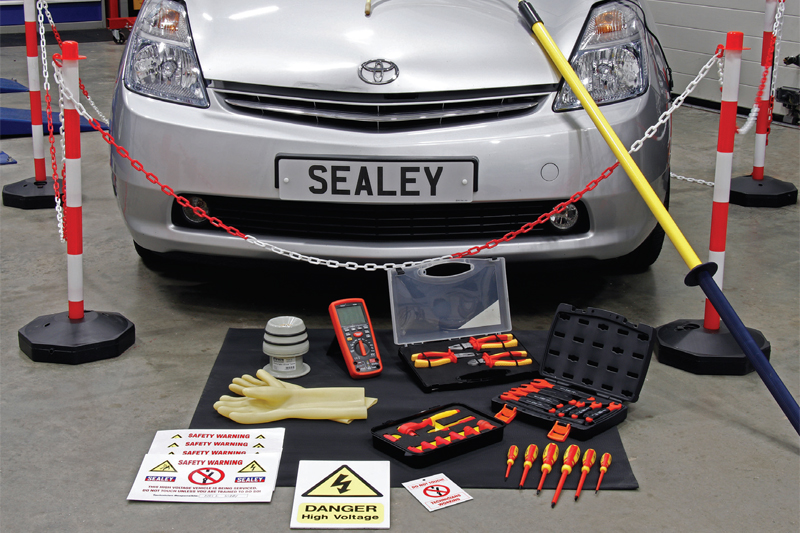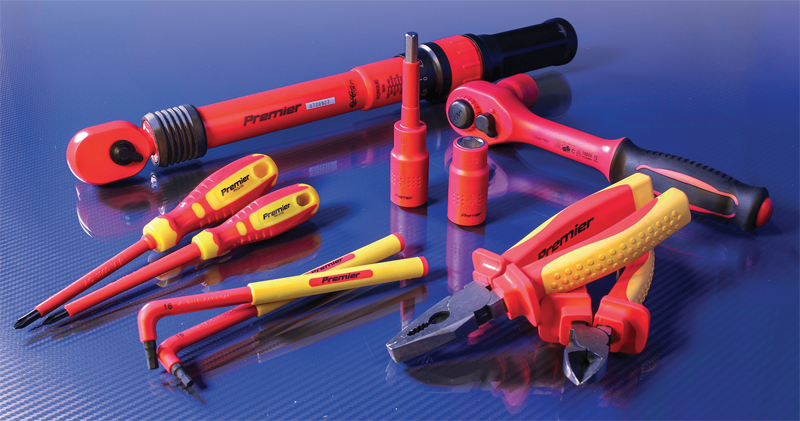
PMM sits down with Neil Kidby, Sealey’s Product Category Manager, to bring it back to basics when approaching hybrid vehicle maintenance.
PMM: So, how old is hybrid technology?
Neil Kidby (NK): Most people see hybrid technology as a new idea. However, the first hybrid car was actually designed in 1898 and was exhibited at the Paris Exposition of 1900. It was the Lohner-Porsche Elektromobil, that was designed by a 23-year-old engineer, unknown at the time, named Ferdinand Porsche. Exposition records show that Porsche’s vehicle could travel 38 miles solely on electricity, and could reach a maximum speed of about 35mph. Thus, the hybrid vehicle was born. Development over the following decades was very slow, due to technology becoming a limiting factor, as well as the resistance from supporters of conventional fuels.
In 1994, Akihiro Wada, Executive Vice President of Toyota, posed a challenge before a special team of company engineers: build a car with double the fuel efficiency of conventional vehicles. Three years later, Toyota introduced the Prius in Japan as the world’s first mass-produced petrol/electric hybrid car. All major car manufacturers now offer a hybrid vehicle as part of their range.
PMM: What types of high voltage vehicles are out there?
NK: A conventional hybrid vehicle is the most common high-voltage vehicle that garages will encounter. It is primarily powered by an internal combustion engine that is assisted as and when it is required by a high-voltage motor(s). To supplement this, electric motors will also recover energy during braking, recharging the high-voltage battery.
A plug-in hybrid vehicle operates on the same principle, but has a much larger storage capacity due to the high-voltage battery and can be charged from an external power source for longer periods of running without the use of the petrol engine.
Finally, a full electric vehicle has only electric motors for propulsion and has a much larger battery. These batteries can weigh over 300kg. External charging is required for the high-voltage battery, but energy recovery via the motors works on the same principle as on a hybrid. A range extended electric vehicle is a full electric vehicle, but uses a small internal combustion engine to charge the high-voltage battery if required. This engine cannot be used for vehicle propulsion; it addresses the ‘range anxiety’ felt by many drivers.
PMM: How high is the voltage exactly?
NK: Using the Toyota Prius Gen 2 as an example, the battery voltage is 201.6V DC, with the component weighing 53kg. Newer vehicles use a lithium ion battery which has a higher voltage, and in some cases, can be up to 800V DC. This DC voltage is increased and converted into AC three-phase current to power the motor generator units. Anything over 60V DC and 30V RMS AC presents a serious risk, and can lead to injury or even death.

Fortunately for the vehicle technician, there are warning signs, and all high-voltage cables are coloured orange, with the earth return also running through these cables. An additional safeguard is that any component containing high voltage will have a warning label on it.
PMM: What equipment does a technician need to work on a high-voltage vehicle?
NK: Technicians will need an exclusion area to keep untrained people away from the vehicle being worked on, and signs to warn of high voltage. Sealey can provide these solutions. The company’s HP55K1COMBO exclusion zone kit has 25m of chain, six posts, warning signs for the vehicle and keys, and a warning sign for the working area. Also available are grade 0 (1,000V) high-voltage gloves (HVG1000VL), and an electrician’s insulating mat (HVM17K02) that provides 17,000V protection and should be used in conjunction with the gloves.
A somewhat more unusual item, but exceptionally important, is the high voltage rescue pole (HRP45). In case of an accident, it can be used as a means of recovering the casualty, providing 45,000V of insulation protection. Last but not least, Sealey also supplies a category III voltmeter (TA302), built to a specific standard to ensure safe working when approaching the voltage and high current found in high-voltage vehicles.
I would also recommend investing in VDE tools as these are insulated, and are easily identifiable by their distinct colouring.
Hybrid quick fire questions
Q. What is the danger when working with hybrids?
A. There is enough high voltage to cause harm or death.
Q. What is the risk?
A. Coming into contact with the high voltage.
Q. Can we remove/reduce the risk?
A. Yes! The high-voltage battery can be isolated.
Q. Do i need to be trained or qualified?
A. Yes. Training courses are available from a variety of sources, including the IMI.









